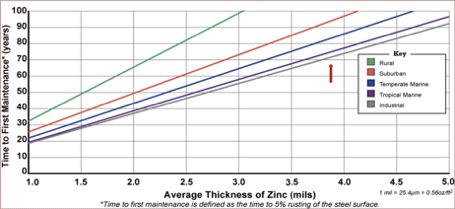If you’ve sent metal to be galvanized, Duncan or other galvanizers may have asked you to include specific vent holes in the piece. For successful batch hot-dip galvanizing, cleaning solutions and molten zinc must flow without undue resistance into, over, through, and out of the fabricated article. Our team broke down why these vent holes are necessary:
Safety of Personnel and Your Material
Without vent holes, the pressure built from the heat of the kettles can cause steel to explode in the zinc kettle, and seriously injure personnel, while destroying your material. For everyone’s safety in the plant, and for the safety of your material, we request adding vent holes to your steel before you send it for galvanizing.
Even Coating of Zinc
Vent holes also help the steel to be coated evenly throughout the inside and outside of the steel. Hot-dip galvanizing is the only process that protects both the inside and outside of tubular steel structures, and proper vent holes help this process to be effective. Lack of vent holes can cause the steel to have bare spots, uneven texture, and other zinc coating problems, so it’s important to ensure holes are placed properly so steel can be evenly coated. Even if the drain hole is only an inch away from its ideal location, that inch can create an air pocket, resulting in an uncoated area, which can result in rust staining even in the coated regions. An even coating of zinc helps with your steel’s corrosion protection and aesthetics and prevents unsightly zinc build up.
Complete Immersion
Appropriately placed and sized vent holes prevent the steel from floating in the zinc bath. Full immersion of the zinc is essential to the quality hot-dip galvanizing. The size and placement of these vent holes are different depending on the steel being galvanized, so check with the galvanizer where these holes are necessary to ensure the steel can be fully immersed in the zinc bath.
Contact Duncan Galvanizing
Duncan Galvanizing is proud to be the Northeast’s trusted provider of hot-dip galvanizing, Colorgalv (paint over galvanizing), and more. Give us a call today at 617-389 8440 or fill out a contact form on our website.






 The size of zinc baths varies from galvanizer to galvanizer and this restricts the size of steel that can be galvanized. When choosing a galvanizer, make sure that the size of the zinc bath is big enough to accommodate the size of your products such as large structural shapes.
The size of zinc baths varies from galvanizer to galvanizer and this restricts the size of steel that can be galvanized. When choosing a galvanizer, make sure that the size of the zinc bath is big enough to accommodate the size of your products such as large structural shapes.